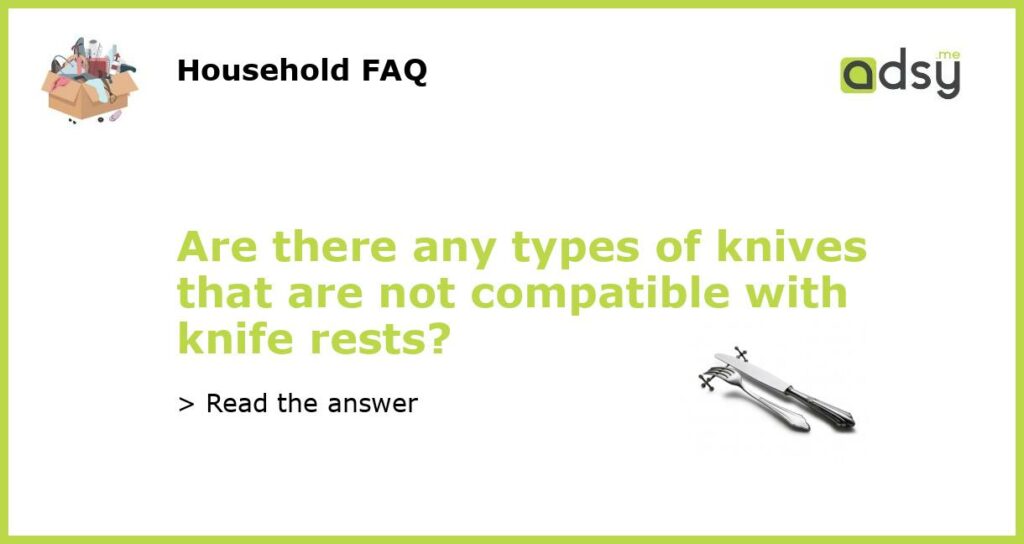Understanding Knife Rests
Knife rests are a great accessory for any dining table, especially if you are hosting formal dinners or events. They provide a secure and clean place to rest your knives, preventing them from coming into contact with the tablecloth or other utensils. However, not all knives are compatible with knife rests. In this article, we will explore the types of knives that should not be used with knife rests.
The Incompatibility of Serrated Knives
Serrated knives are one of the most common types of knives, especially when it comes to cutting bread. However, they are not the best choice when it comes to knife rests. The serrations on the knife can damage the surface of the rest, leaving it scratched and unsightly. Additionally, serrated knives tend to be heavier than other types of knives, which increases the risk of breakage or damage.
Avoid Using Ceramic Knives with Knife Rests
Ceramic knives have grown in popularity over the years due to their sharpness and durability. However, they are not ideal for use with knife rests. Ceramic knives are incredibly hard and can chip or crack when knocked against a hard surface. As a result, they can easily scratch or damage the knife rest. Additionally, ceramic knives tend to be lighter than other types of knives, which also increases the risk of damage or breakage.
Kitchen Shears and Knife Rests
Kitchen shears are incredibly useful when it comes to preparing food, as they can be used to cut through meat, poultry, or even herbs. While they are technically a type of knife, they are not recommended for use with knife rests. Kitchen shears tend to be heavier than other knives and can damage the knife rest’s surface if they are accidentally dropped or knocked against it.
Choosing the Right Knives for Your Knife Rests
When it comes to using knife rests, it is important to choose the right knives for the job. While some knives may be compatible with knife rests, others may cause damage or scratches. Your best bet is to choose knives that are lightweight and have a straight edge, eliminating the risk of damage or breakage. By doing so, you can enjoy your knife rests without worrying about potential damage to your knife collection.






